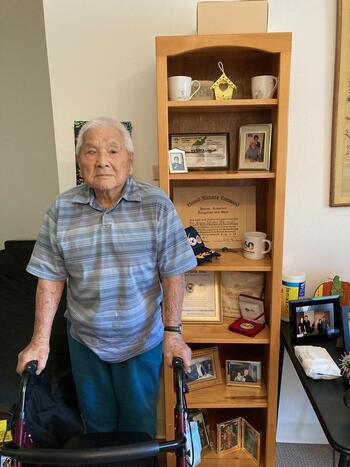91│į╣Ž Honors Top Students from 2020ŌĆō2021 Regional Programs in Japan
On August 23, 2021, a virtual award ceremony was held to recognize the eight honorees of 91│į╣ŽŌĆÖs 2020ŌĆō2021 regional programs in Japan. These students performed at the highest levels in their respective courses. Their names, high schools, and final research project titles appear below.
Stanford e-Hiroshima (Instructor Rylan Sekiguchi)
- Sara Arakawa (Hiroshima Prefectural Hiroshima Kokutaiji Senior High School), ŌĆ£Silicon Valley: Secrets Behind SuccessŌĆØ
- Chika Isone (Hiroshima Prefectural Hiroshima Senior High School), ŌĆ£Innovation by Design Thinking in Silicon ValleyŌĆØ
Stanford e-Kawasaki (Instructor )
- Eric Silang (Kawasaki High School), ŌĆ£Humor and AmericaŌĆØ
- Shunya Tani (Kawasaki High School), ŌĆ£Possible Ways to Promote Renewable Energy in Japan and the U.S.ŌĆØ
Stanford e-Oita (Instructor )
- Hana Burkart (Hofu High School), ŌĆ£Social Discrimination Against Foreigners in JapanŌĆØ
- Yayano Okuda (Usa High School), ŌĆ£Environmental EducationŌĆØ
Stanford e-Tottori (Instructor Jonas Edman)
- Eri Tamura (Tottori Nishi High School), ŌĆ£TeachersŌĆÖ Treatment in the U.S.ŌĆØ
- Hinata Yonemura (Yonago Higashi High School), ŌĆ£Veganism: How Japanese Society Can Promote ItŌĆØ

The Honorable Toru Maeda, Consul General of Japan in San Francisco, made opening remarks and congratulated the honorees on their outstanding academic performances. Addressing the students directly, he said, ŌĆ£You have demonstrated strong initiative and deep understanding of various aspects of Japan and the United States.ŌĆØ He also expressed optimism in the future of the U.S.ŌĆōJapan relationship. He continued, ŌĆ£With young people like you, IŌĆÖm confident that JapanŌĆōU.S. relationsŌĆöwhich are now firmly based on shared fundamental values and common strategic goalsŌĆöwill continue to grow for many years to come. A deeper understanding among young people on both sides will promote greater cooperation and collaboration between our two countries, which will enable us to meet the challenges lying ahead.ŌĆØ
Consul General MaedaŌĆÖs remarks were followed by introductions of the student honorees by their instructors Sekiguchi, Bacha, Yamashita, and Edman. The honorees then gave formal research presentations in English and responded to questions from the audience. Each honoree received an award plaque to recognize their achievement.
Although some of the students felt nervous about their presentations at the beginning of the event, once the ceremony ended, they felt a sense of accomplishment and renewed motivation. ŌĆ£I had a great time today,ŌĆØ commented Sara Arakawa. ŌĆ£My desire to study English is getting stronger each day, and I will practice hard to be a person who works globally in the future. I will never forget everything I learned in this program.ŌĆØ
The 91│į╣Ž instructors would like to express their gratitude to their key contacts at the Hiroshima, Oita, and Tottori Prefectural Boards of Education and the City of Kawasaki, who have helped make these regional programs a success. They would also like to thank Hiroshima Governor Hidehiko Yuzaki, Kawasaki Mayor Norihiko Fukuda, Oita Governor Katsusada Hirose, and Tottori Governor Shinji Hirai for their continued support of these regional programs.
91│į╣ŽŌĆÖs regional programs are a subset of our local student programs in Japan.
To stay informed of news about 91│į╣Ž, and follow us on , , and .
Read More
Congratulations to the eight student honorees from Hiroshima Prefecture, Kawasaki City, Oita Prefecture, and Tottori Prefecture.


























